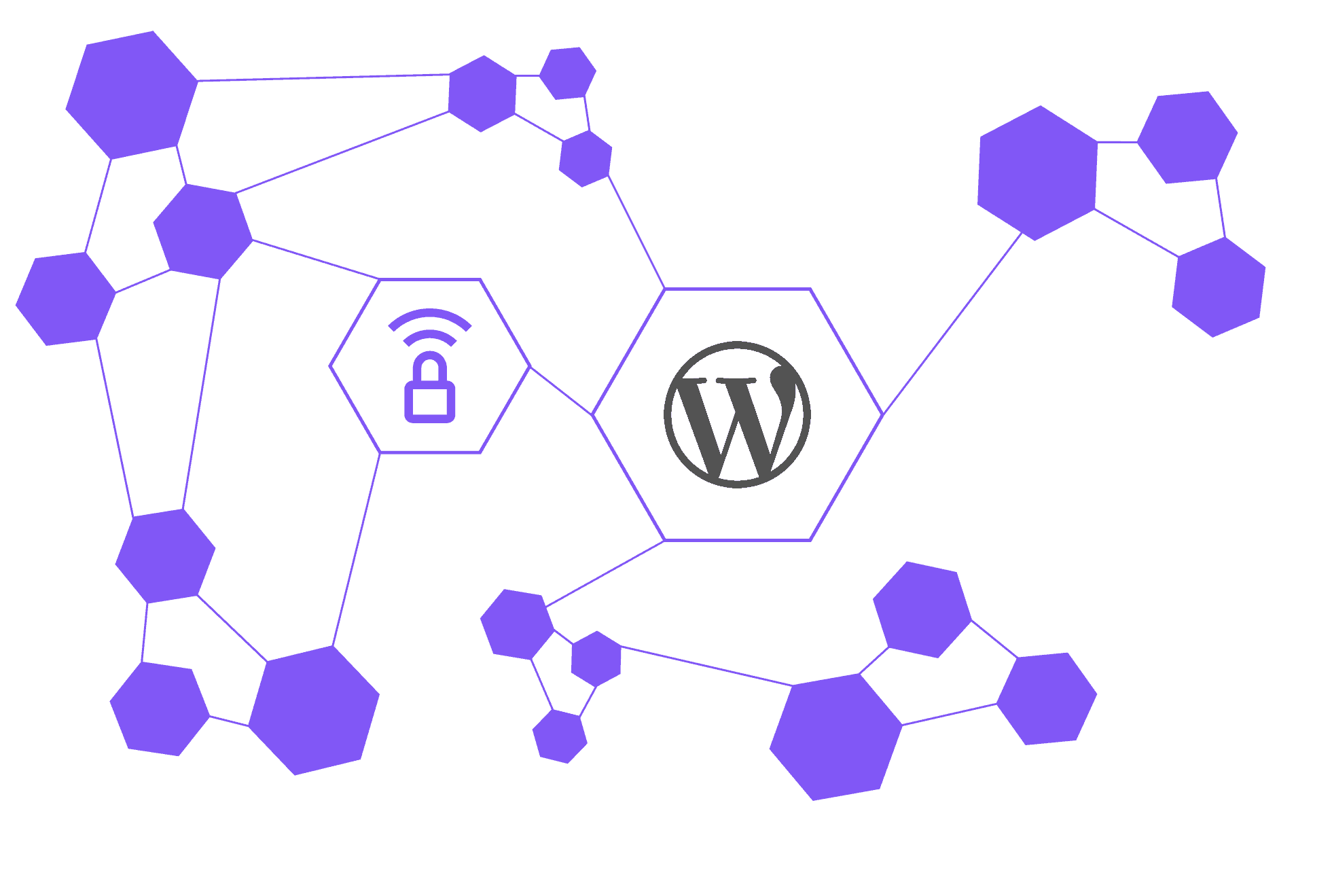The 6 Most Common WordPress Security Issues & Concerns—and How to Solve Them
WordPress is, by far, the most popular CMS in the world. It’s also among the most secure.
That might not be obvious, considering how many articles you read about security attacks against WordPress websites. The truth is, when you power more than 40% of the world’s websites, you’re bound to be a target.
Given that exposure, WordPress has an impressive array of potential protections. However, the many moving parts that come together to create a website can still create security flaws.
So yes, WordPress can be secure. But how protected your website and backend data actually is depends on how actively you manage your security settings and the plan you have in place to prevent and mitigate attacks.
Inevitably, some WordPress security vulnerabilities will pop up over time. In a world where 30,000 websites are hacked every single day, that’s almost inevitable.
The key to successful website management, then, is making sure you understand potential flaws and put the plans in place to protect against them. On WordPress, that process is relatively simple—as long as you know where to look and how to fix the most common issues. You’ve lucked out; that’s exactly what we’ll cover in this guide.
Vulnerability 1: Login Security
You, and anyone with access to edit your website’s backend, have logins. How secure those logins are plays a major role in keeping your website safe and secure.
What is it?
The safety of your admin logins is perhaps the most straightforward security issue with WordPress. Because this CMS is so widely-used, the admin login screen (which is identical for all websites on the platform) is an easy target for malicious users.
Most commonly, your login security is compromised because of so-called “brute force” attacks. Here’s how cybersecurity firm Kaspersky describes this old-but-proven hacking method:
A brute force attack uses trial-and-error to guess login info, encryption keys, or find a hidden web page. Hackers work through all possible combinations hoping to guess correctly. These attacks are done by ‘brute force’ meaning they use excessive forceful attempts to try and ‘force’ their way into your private account(s).
In other words, hackers build a script that goes through millions of potential username and password combinations in the fraction of a second. Once they get lucky, the script notes the codes that got them there, providing easy access through the front door.
Your login security isn’t always compromised through brute force, though. Easy-to-guess admin passwords can allow access to anyone who’s willing to give it a shot. Once they’re in, they’ll be able to see and edit anything that you can.
How do you fix it?
Fortunately, the solution to this security flaw is pretty simple: improve your passwords. Even sophisticated brute force attacks will have trouble guessing unpredictable passwords that are made of multiple character types. Strong passwords with combinations of letters, numbers, and special characters make it more difficult for hackers to break into your site.
This guide on creating a strong password is a great resource to get started. Do it right, and it will take even a brute force algorithm years to crack it. And if all of that gets too complex for your own good, using a password manager can help you keep track and stay strong.
You can take a few other steps, as well. Two-step authentication makes your admin passwords impossible to crack. You might also want to get rid of your standard “admin” account, which tends to be first in line for an admin attack. With a two-step or two factor authentication it helps to make sure that only authorized people are able to gain access to your site.
Another suggestion is to limit those who have access to your website in the first place. This cuts down on the number of accounts that hackers can take over in order to gain access. Plus limiting the number of admin users helps to cut down on the amount of access and power each admin user has.
For extra protection give you WordPress login and update through the use of a WordPress plugin you can limit login attempts and increase your WordPress security (just be careful of the plugins used as noted in our next section.) This ultimately can keep your WordPress site safer from hackers using brute force attacks to guess your password. Also limit login attempts for specific administrative roles/positions within the website – the higher the role/position the more security needed!
Vulnerability 2: Outdated Software or Plugins
You’ll often hear WordPress and cybersecurity experts lament the dangers of plugin. Let’s not forget that plugins can be great in the right usage, but they do need to be managed to avoid security risks.
What is it?
WordPress updates frequently. Generally speaking, we recommend checking for updates at least once every month. If you stop updating your core software, you risk opening your site up to security flaws and security vulnerabilities that the updates are specifically designed to solve.
The same is true for plugins, which are a convenient backdoor for hackers if the core software is well-protected. If you don’t check for updates frequently, you could open yourself up for WordPress vulnerabilities and common WordPress security issues.
Ignore these updates, and your website becomes vulnerable. Malicious users now have access to your backend code, which they can use to install malware or trackers that ultimately compromise your data.
How do you fix it?
The easy answer is making sure that both your core WordPress software and your WordPress plugins and themes are always up to date. Here’s how you can achieve that.
Within your WordPress system, navigate to the Updates tab, which gives you an easy overview of what needs to be updated, and what’s already on the latest version. You can also check for updates with the click of a button, and see the timestamp for the last time you performed that check.
Updates for your Plugins will show up in the Plugins tab in the same system. You’ll need to update them individually, which can take some time.
Check both tabs frequently. Once a month is a good cadence, but there are no penalties for more regular checks. Reserve some time to run the updates, making sure you never run into time crunches with other adjustments or admin tasks at the same time.
Vulnerability 3: Malware
You’ve probably heard the term as a thing to avoid. But what is it, and how can you avoid it? Let’s dig into malware as a common WordPress security vulnerability.
What is it?
Malware is short for “malicious software.” It exists as a threat in anything related to coding and technology. In websites specifically, it’s most commonly a few lines of codes that get smuggled into your website specifically to track and send out reports on sensitive data you’d rather keep to yourself.
Malware can steal credit card information on your e-commerce site. It can check for customer logins or begin to follow your website users around to other destinations. It can even be used to spam your site’s content.
In other words, it’s not necessarily the type of parasite you want to let in.
How do you fix it?
The most common reason malware finds its way onto WordPress websites are outdated plugins and themes, and we’ve already covered those above. But we should also mention that some plugins come with malware built-in. Naturally, you want to avoid those.
That means you need to be judicious with any plugin that makes its way to your site. In its plugin directory, WordPress lists basic information about each of its 58,000+ options, including basic security information. That’s a great start.
It also helps to work with a development partner who can vet plugins more thoroughly on your behalf. Generally speaking, it’s better to pay a bit extra for a well-vetted plugin than get one for free that comes with an unhelpful, hidden malware addition.
It’s not enough to be mindful in the beginning, though. It also helps to regularly run one of many available WordPress security scanners that can help you find and remove malware.
Vulnerability 4: Phishing
The name is somewhat self-explanatory, if you ignore the ph it starts with for a second. A phishing attack includes hackers literally fishing for personal information from your customers, using your website’s vulnerabilities.
What is it?
Here’s how phishing tends to work: through a vulnerability in your website’s code, a malicious user gains access to your contact database of website visitors. They use that contact information to send out countless emails pretending to be something else.
The message itself will contain a link promising a resolution or reward of some kind. Once the user clicks on it, malware installs on their computer or browser, and their information (including credit card information) is exposed to theft.
You’ve come across, or at least heard about this. Think Nigerian prince, social security scams, etc. According to the FBI, phishing is the most common type of cyberattack today.
Most users won’t fall for it. But if even one percent does, the phishers can claim success.
Here’s the problem: when phishing happens through your website and/or WordPress admin account, the attackers present themselves as representing you or your business. Users who fall for it will likely never trust you again. But even for those who recognize it as invalid, your credibility might be severely compromised.
How do you fix it?
Because phishing relies on coding and malware within your system, the fix here is similar to some of the steps we’ve mentioned above. Use secure passwords, regularly update your platform and plugins, and run periodic security checks.
You can also do more. For instance, consider using technology like ReCAPTCHA as another security solution, which can prevent bots from posting phishing messages in your comments. If you do get exposed to a phishing attack, a fast reaction to secure your website and let your users know not to click on specific links, can mitigate some damage.
Vulnerability 5: DoS Attacks
In a way, it’s somewhat like brute force. When hackers attack your website through a Denial-of-Service (DoS) attack, they try to overwhelm it with sheer volume. The results can be devastating.
What is it?
Hackers engaging in a DoS attack send so much bot traffic to your website that your server can’t handle it. The site crashes, preventing both you and your audience from accessing it until the problem is taken care of.
Unlike the other security vulnerabilities mentioned so far, DoS attack focus not on your website, but the server on which it sits. No server can handle an infinite amount of traffic, and the aim is to break it down so that the website has no foundation to stand on.
As a result, DoS attacks don’t harm your website’s code or sensitive data. They simply bring its infrastructure to its knees. Of course, you’ll lose revenue and credibility in the process, especially since your users won’t know what happened and simply think your website no longer exists until it’s fixed.
How do you fix it?
Because DoS attacks aim at your website’s server, finding the right host is key to preventing them. That server, ideally, should have some basic measures (such as a strong firewall) in place to prevent simple attacks.
Beyond the credibility and security of the host itself, it also helps to plan with more bandwidth than you think you’ll need. If your website can withstand an unexpected amount of traffic, you’ll be prepared not just for an increase in customers over time but also the sudden increase that comes with simple attacks.
Even both of these steps may not completely secure you against DoS attacks. That’s why the final step is building a DoS response plan.
Learn to spot early warning signs, such as spotty connectivity or random page load slowdowns. It also helps to have a backup plan in place to respond to an attack, which might include anything from notifications to your internal and external audiences, and the potential move to a new server should the DoS attack subsist.
Vulnerability 6: SEO Spam
Finally, let’s talk about the dark side of SEO. As much as we love optimizing websites to rank highly on search engines, the strategy can be exploited by malicious actors through SEO spam.
What is it?
You know the typical black hat SEO strategies, like link spamming and keyword stuffing? Google finds and punishes them pretty effectively these days. Of course, that’s not helpful if it’s being done specifically to hurt your website’s SEO efforts.
SEO spammers do exactly that. They use malware to change code and content on your website to prompt Google to punish it. That might include filling the site with bad keywords, linking to and from low-credibility websites, and even creating pop-ups that worsen user experience and hide valuable content.
It can get worse. Advanced SEO spammers can use your hard-earned rankings to sell their own questionable merchandise. Once Google notices, your website (not theirs) will get the punishment.
Over time, the results can be devastating. According to one study, 50% of organic traffic and 40% of revenue comes from organic search engine results. Imagine the devastation to your online pipeline if Google begins pushing your page down to lower rankings and pages in its results pages.
How do you fix it?
SEO spammers largely operate through malware, so updated software and regular security checks can help here as well. That’s the basic start.
Beyond that, it also helps to closely monitor your search results and SEO efforts. If your strategy isn’t changing but you’re suddenly seeing decreases in search traffic, something is up that you might want to check out.
Finally, secure yourself against the most basic form of SEO spam: links to your site from questionable pages. Regularly disavowing bad backlinks can help you keep that library clean and stay on the good side of Google.
Conclusion
Generally speaking, WordPress is about as secure as could be expected from the world’s largest CMS platform. Still, as with any platform, there are some security vulnerabilities that you’ll want to stay ahead of.
Simply put, there is no such thing as too much security. It never hurts to snuff out potential threats long before they become actual problems that impact your revenue.
Fortunately, taking the right steps is relatively simple. The solutions described throughout this guide don’t just apply to these specific types of attacks.
Creating complex passwords, keeping your software and plugins up to date, and running regular security checks is never a bad idea. Neither is making sure you use a secure host for your website.
After all, you want that peace of mind. You want to maintain your credibility and grow your revenue. By making security a regular part of your website administration, you can accomplish just that.





